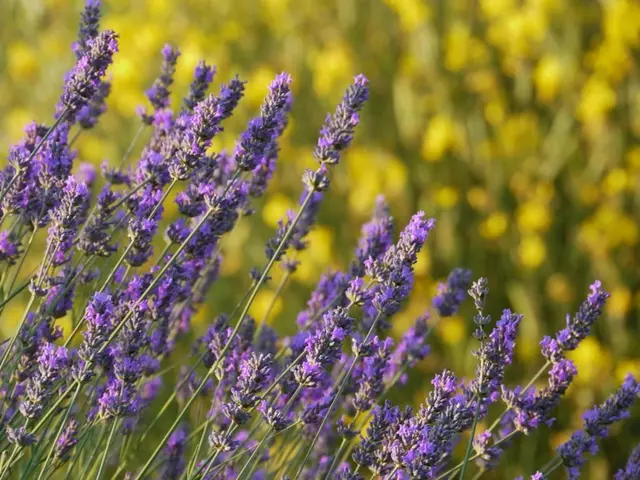Unveiling the Complexities of Stibnite
In the annals of history, the mineral stibnite (antimony sulfide, Sb₂S₃) has played a significant role, particularly in ancient Egypt where it was a key ingredient in kohl, a traditional eye cosmetic. This use dates back to the protodynastic period of Egypt, making it one of the earliest known cosmetic applications of a mineral substance.
Beyond its role as an eyeshadow or eyeliner, stibnite was also attributed medicinal properties. Ancient texts, including those by Pliny the Elder in the 1st century CE, describe multiple medicinal remedies involving antimony sulfide. The use of kohl containing stibnite was believed not only to enhance beauty but also to protect the eyes from infections, ward off evil spirits, and possibly provide therapeutic benefits.
Culturally, these traditional eyeliners—known by various names such as kohl, kajal, and surma—have been used widely across Africa, South Asia, and the Middle East. They continue to be used today in some communities for both decorative and perceived medicinal purposes, including to protect children's eyes and ward off the "evil eye."
However, it is essential to note that stibnite (and compounds containing antimony) can be toxic, and modern awareness emphasizes caution in its use as cosmetic eye makeup due to potential health risks.
The most spectacular stibnite specimen known today is displayed at the American Museum of Natural History. It has a metallic lustre, reflecting light perfectly like a mirror, and usually forms in hydrothermal deposits. Stibnite has one perfect cleavage direction and a hardness of only 2 on the Mohs scale, making it extremely soft and brittle.
Dark, slender, needle-like prismatic stibnite crystals are prized as inclusions in rock crystal quartz and calcite. Stibnite is lead-grey with a blue tint and can show some iridescence. The specific gravity of stibnite is 4.63, and it is a natural mineral source of the chemical element antimony (Sb).
Stibnite is rarely fashioned or used in jewellery due to its fragility and brittleness. It forms as orthorhombic crystals that can be heavily striated along the prism's length. Well-formed crystals of stibnite are usually found in intricate clusters of radiating crystals or nest-like formations.
The largest known deposits of stibnite are in China (Xikuangshan mine), as well as in Russia, USA, Japan, France, and Germany. The Greek word stimmis became 'stibium' in Latin. Dioscorides, the Roman naturalist, referred to stibnite as πλατυόφθαλμον (platyophtalmon) or στίμμις (stimmis).
In 1832, the mineralogist François Sulpice Beudant named the mineral stibnite. The dual role of stibnite-based kohl as both a cosmetic and a medicinal product illustrates its importance in ancient and traditional healthcare and cultural practices.
- Modern research in gemmology explores the potential of stibnite in the creation of unique supplements for health-and-wellness, due to its historical medicinal uses.
- The scientific community continues to study the properties of stibnite, particularly in the field of environmental-science, as it can be found in hydrothermal deposits.
- In addition to its historical uses, stibnite is now considered a valuable resource in manufacturing, where it contributes to various industries, such as mental-health therapies-and-treatments and skin-care products.
- Nutritionists and weight-management experts investigate the possibilities of using stibnite in weight management, given its historical uses as a medicinal substance.
- The finance sector has shown interest in the stibnite industry, recognizing its potential economic impact, particularly in investment opportunities in the global mineral market.
- The energy sector has also been curious about stibnite, as it is a natural source of the chemical element antimony (Sb), which has applications in energy production.
- Space-and-astronomy enthusiasts may find stibnite interesting, as its properties could potentially have applications in the industry, such as in the development of new materials for space travel.
- Retailers are exploring the possibility of selling stibnite-based products in their stores, expanding their offerings to include items related to health-and-wellness, fitness-and-exercise, and arts-and-crafts.
- Interior designers might find stibnite intriguing for its unique aesthetic, utilizing it in decorative elements or even as a conversation piece in homes.
- Cooking enthusiasts might experiment with stibnite in their kitchens, trying out recipes that call for the mineral's chemical properties, such as in various baking or beverages.
- Transportation companies could potentially incorporate stibnite in their vehicles, especially in relation to fuel efficiency, given its potential role in energy production.
- The wearables industry may embrace stibnite, using it in the creation of smartwatch straps or jewelry, due to its distinctive look.
- Smart-home-device manufacturers might consider using stibnite in the development of new products, taking advantage of its unique properties and aesthetics.
- Cybersecurity professionals could examine the possibilities of using stibnite in data-and-cloud-computing systems, as its properties could provide unexpected benefits for security and performance.
- Lifestyle journalists might write about the latest trends in using stibnite for outdoor-living activities, such as exploring sustainable-living options inspired by ancient practices.
- Fashion-and-beauty influencers could create content around stibnite's potential use in cosmetics, highlighting the mineral's historical significance in beauty traditions.
- Food-and-drink bloggers might feature stibnite in their recipes, experimenting with its possible health benefits and the unique tastes it could provide.
- Dining establishments might offer dishes or drinks made with stibnite, showcasing its potential culinary uses.
- Climate-change activists could discuss stibnite's role in the industry, exploring its potential impact on current environmental issues.
- Wealth-management experts could advise their clients about investing in the stibnite industry, highlighting its potential for growth and profit.
- Home-and-garden enthusiasts might incorporate stibnite into their landscaping or gardens, admiring its unique appearance.
- Home-improvement specialists could offer stibnite-based products to homeowners, showcasing the mineral's potential uses in home improvement projects.
- Baking enthusiasts might experiment with stibnite in their recipes, discovering its possible effects on the texture and taste of baked goods.
- Beverage connoisseurs might create unique concoctions using stibnite, showcasing its potential role in mixology.
- Business owners might consider venturing into the stibnite industry, seeing its potential for growth and innovation.
- Venture-capital firms could examine investing in companies involved in the stibnite industry, focusing on opportunities for product development and market expansion.
- Personal-finance advisors might educate their clients about stibnite's potential role in wealth-management strategies, discussing the mineral's investment possibilities.
- Real-estate developers might explore incorporating stibnite into their projects, capitalizing on the mineral's aesthetic appeal and historical significance.
- Stock-market analysts could study the performance of companies involved in the stibnite industry, predicting trends and offering investment advice.




